Milk samples for culture and sensitivity testing of the mastitis-causing agents is an essential part of mastitis control. Milk sample testing provides added value, but so does the veterinary interpretation and advice. It is important to educate farmers on how to take samples and when to test.
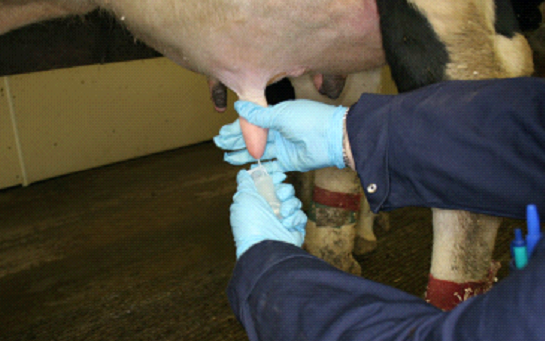
The added value of testing milk samples
⦁ Knowing the type of bacteria involved will tell us on which preventive measurements to focus. The biggest added value of the veterinarian lies in the prevention of mastitis cases.
⦁ Knowing the type of bacteria will help identify the optimal treatment, with the greatest effect of treatment success. This information is included in in the farm treatment plan.
Setting up an effective farm treatment plan for mastitis: https://ahdb.org.uk/mastitis-control-plan
⦁ It allows the early detection of detrimental mastitis pathogens, such as Mycoplasma, Klebsiella and Staph. Aureus, which can cause major damage.
⦁ It supports the use of alternative antimicrobial therapy for clinical mastitis cases that do not respond to first line treatments. For this, you require a milk sample taken prior the start of treatment. Samples taken from cows under treatment or shortly after will highly likely be culture negative.
⦁ To build up a clinical mastitis history for each individual cow – and a pathogen profile for the farm.
The added value of the veterinarian: interpretation and advice
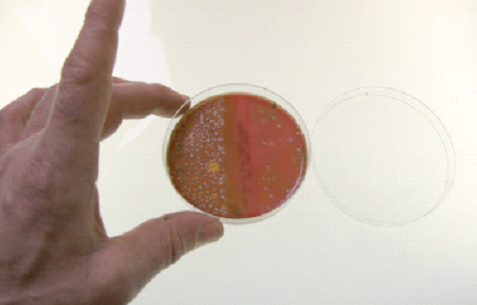
Interpretation: explaining what the results mean
Milk sampling results allow vets to advise their dairy farmers on targeted measures regarding mastitis control. The vet’s role is to provide insight and understanding, explaining what the sample results mean for the individual cow and for the herd.
Milk sample results can help determine targeted treatment for individual cows and allow evaluation the impact of treatment.
But perhaps more importantly, taken together, the milk sample results paint a picture of udder health on that specific farm, how many animals are affected, and which are the dominant pathogens. Negative results also provide information, as clinical mastitis cases with negative milk sample results are more likely to be caused by Gram-negative bacteria.
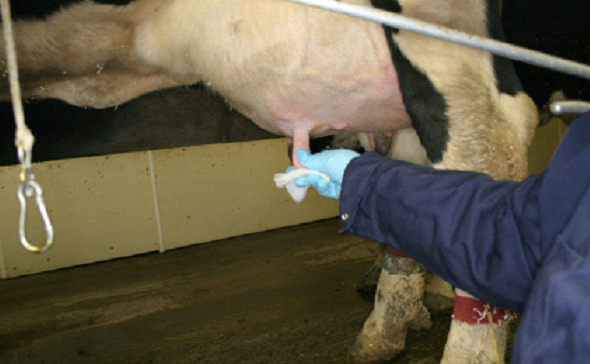
Educating farmers on milk sampling
Another point of veterinary-added value is education: teaching farmers how to take milk samples (correctly), how to organize taking milk samples (which cows to sample and when), and how to store the samples prior to submission or analysis.
Taking a milk sample https://ahdb.org.uk/knowledge-library/aseptic-milk-sampling
Knowing when to take samples is as helpful for farmers as knowing how. For example, milk samples of clinical cases of mastitis should be taken during milking. However, this is a busy time for the milker — separating the milk from that specific cow, deciding on what to do, marking the cow. Taking a sample, identifying it and storing it should therefore be made easy, with all sample material and storage space within easy reach.
Everything within easy reach: the milk sampling tools
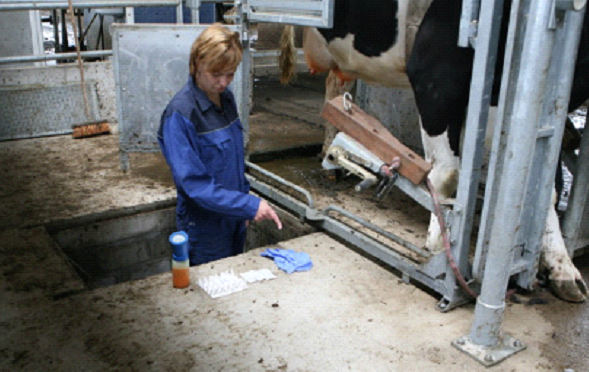
Make sure everything is easily accessible when milk sampling:
⦁ Gloves, paper towel and disinfectant wipes
⦁ Sterile sample tubes and marker pens
⦁ Small refrigerator or cool box (to store samples until milking has ended)
⦁ Teat dip
Disposables should be checked and restocked after each milking.
Milk samples: analyse now or keep for later?
Whether to test immediately or to store the sample for future analysis depends on the situation.
In cases of clinical mastitis or abnormal milk, the farmer can either:
- immediately have the sample tested and start treatment as soon as results are available.
- start treatment according to the farm treatment plan.
- the milk sample can be tested to confirm the choice of treatment or be kept as back-up information in case response to treatment is poor.
Setting up an effective farm treatment plan for mastitis
- Setting up an effective mastitis treatment plan: https://ahdb.org.uk/knowledge-library/mastitis-in-dairy-cows
Some farms send in milk samples in batches once a month. Such samples require storing in the refrigerator or freezer (depending on when the sample was taken). The batch may include samples from clinical cases as well as those from high cell count cows. This approach has the advantage that both farmer and vet create a dedicated moment one a month to work on farm udder health.
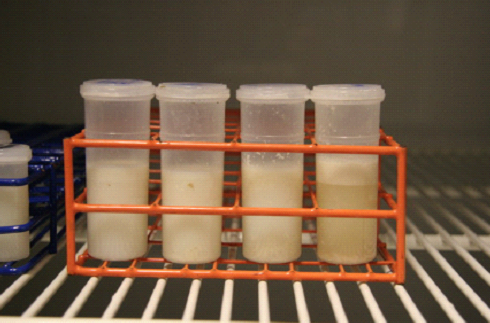
In subclinical mastitis – cows with high cell counts – it is less urgent. However, results of testing can be used:
⦁ for targeted treatment of the individual cow, and to help set up or adjust the farm treatment plan.
⦁ to monitor and build a clinical history for each individual cow. If she is a ‘repeat offender’, and is back on the list of attention cows with high cell counts, you’ll want to know if it is a recurring infection from the same pathogen, or a new one. You’ll also want to know about any antimicrobial resistance of the previously cultured bacteria.
When sampling milk from high cell count cows, it is important to know which quarter(s) are affected. These can be identified using the Californian Mastitis Test (CMT).
See how and when to do a CMT [future blog]
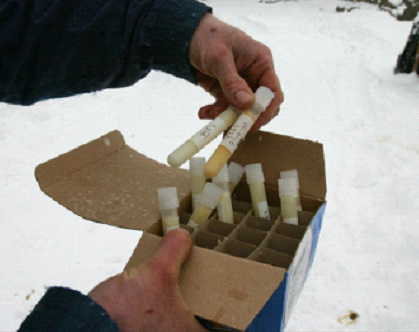
Culture and sensitivity testing of milk will help you gain insights in the mastitis health on a farm and will help fine-tune the farm mastitis treatment plan. It is a key element of mastitis management.
Farmers should know how to take a milk sample in a hygienic manner without the risk of contamination.
Taking a milk sample https://ahdb.org.uk/knowledge-library/aseptic-milk-sampling
